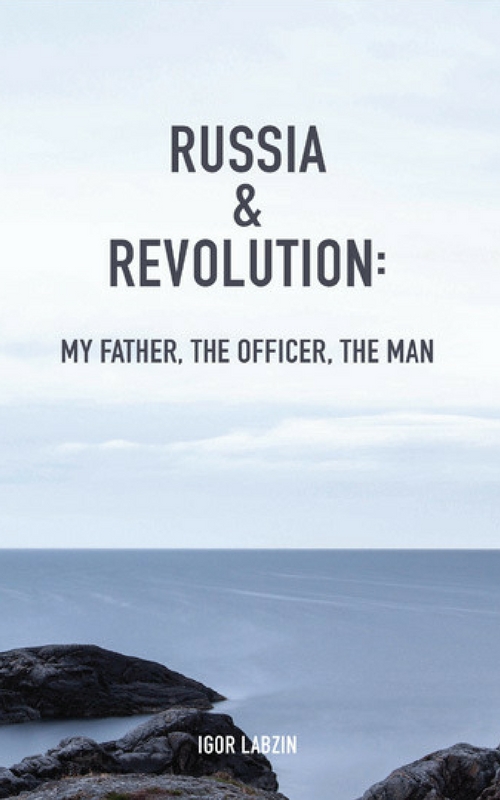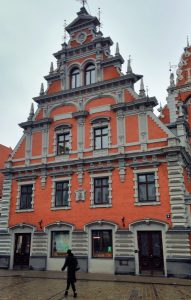
Riga, a place that until recently had been a place somewhere, not quite sure where.
And all of a sudden due to force of circumstance and a love of travel, we had just booked into an Airbnb in the main street of Riga.
1. Getting there
The journey to Riga had not been smooth sailing! We had caught a train from Tallinn to the border with Latvia and then found out that there were no connecting trains or buses, at least not for the next 15 hours to Latvia and to Riga in particular.
So we caught a taxi, for the princely sum of 100 euros from the border to Riga. The taxi driver encapsulated the dichotomy of the present day Baltic republics.
The taxi driver, a Russian, who drove us there, was entertaining as he described life from his point of view, life for Russians in the present day reality of the independent Baltic States. It all sounded a bit like the Russians were more likely to be struggling in the new reality of life in the Baltic States!
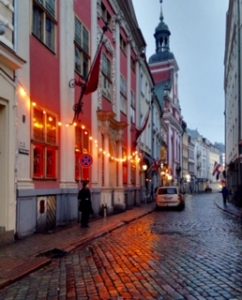
2. Staying there
The modern, recently refurbished apartment in Riga was situated on the top floor of an old six-storey apartment building with a 1930’s era lift with manually operated closing doors that could knock you out if you didn’t jump out of the way quickly enough. The apartment was great; not only was there a spa bath, but big comfy sofas to curl up on and read and take it easy.
It was then that we realised that our stay in Riga was to be not just not another stop over. It was a brush with history, and a brush with the more violent and tragic part of history at that.
Our street, Brivibas (Freedom) Street was previously Lenin Street and before that Adolf Hitler Street and before that who knows!
Two bloodthirsty dictators and a post-communist regime had left their imprimatur on the street name and many other things!
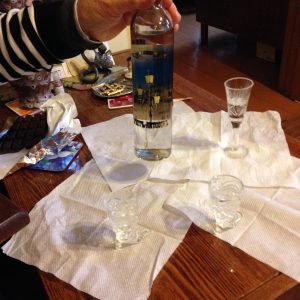
3. The characters there
In amongst all this present day Baltic anti-Russian feeling, we meet Svetlana, one of the nearly 40% of the population that is Russian still living in the Baltic States. Svetlana is more Russian than most Russians are. Svetlana an actress, hosts the Russian programme “Radio Riga”, is the chairwoman of the local Pushkin Society and the main sustaining members of the “Society for the Restoration of the Pokrovskaya Cemetry” located not far from the centre of Riga and at one time considered “the place to be buried” in the Russian Empire.
Svetlana’s life and personality is so rich that it would have seen her in one of Pushkin’s poems, had he known her. She is full of energy and drive, in touch with Russian literature and history, loves straight vodka shots, and has a keen eye for men. A true Russian woman and a connoisseur of the finer things in life.
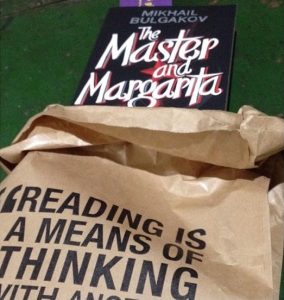
4. Away from the main square there
She takes us to visit the Cemetery along a street made famous, she says, by Mikhail Bulgakov in his book “The Master and Margarita”. Bulgakov was an author writing un-Soviet literary works in the days of Stalin, a not very promising literary career or for that matter, life expectancy for those times. Luckily for him he finished writing it just before he died, thereby cheating the firing squad.
Unexpectedly, his book saw the light of day in Western Europe in the 1960’s when Marianne Faithfull gave it to Mick Jagger. Jagger was so inspired that he wrote his very famous song “Sympathy for the devil” based upon it.
In the book, “The Master and Margarita” the locals say Margarita, the witch, at one point travels along the street leading to the cemetery, today called Meness Street, which means Moonlight Street, to meet her friends at the cemetery.
A strange feeling overcomes you when you are walking along the very same street to the very same cemetery to make your acquaintance with one of your ancestors. It is as if you are going back in time as a character in Bulgakov’s story.
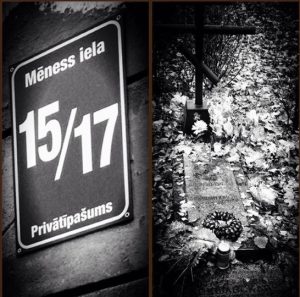
5. The fame of Meness Street there
Meness Street, for all its literary noteworthiness, is unremarkable. But its destination, the cemetery, is certainly something to behold. A home away from home to be proud of! Steeped in history and populated by famous and accomplished personages who are buried there, it would certainly be a place where one would be honoured to be laid to rest.
In a way, it is like a tidal pool on the beach that still has some water in it when the rest of the tide of history has receded. Bulgakov’s fingerprint is here too. His wife’s twin sister is buried there, as are famous Russian authors, artists and statesmen. Stories abound about its famous people: the Russian author Mintslov who insisted upon being lowered into his grave through a web of pine tree branches with his final instruction to do it as “I will be watching you”; one of the last Metropolitans of the Russian Orthodox Church, tragically killed and whose remains are buried in the ornate chapel. So the story goes, when his body was exhumed a number of years after being initially buried in a grave, to be transferred to the dedicated Chapel, none of his body parts had disintegrates. A sign of saintliness and holiness!
And so as we extricate ourselves from the time travel that the excursion to the Cemetery represents, drink vodka with Svetlana and wander off through the back streets to the huge markets adjacent to the old wharves. The exoticness is captivating and mouth-watering at the same time. Fish from the Baltic, caviar, sausages and meats that are worth sacrificing your health for, are a must.
All in all, Riga and for that matter the Baltic States of Estonia, Latvia and Lithuania are priceless gems that should definitely be on everyone’s to-do list.
Whether overlooking Tallinn in Estonia, whilst munching on their speciality of almonds roasted with sugar, cinnamon and cloves in a red-hot brazier by the side of the street or having breakfast for two for six euros in Vilnius in Lithuania, these countries are a must to visit.


